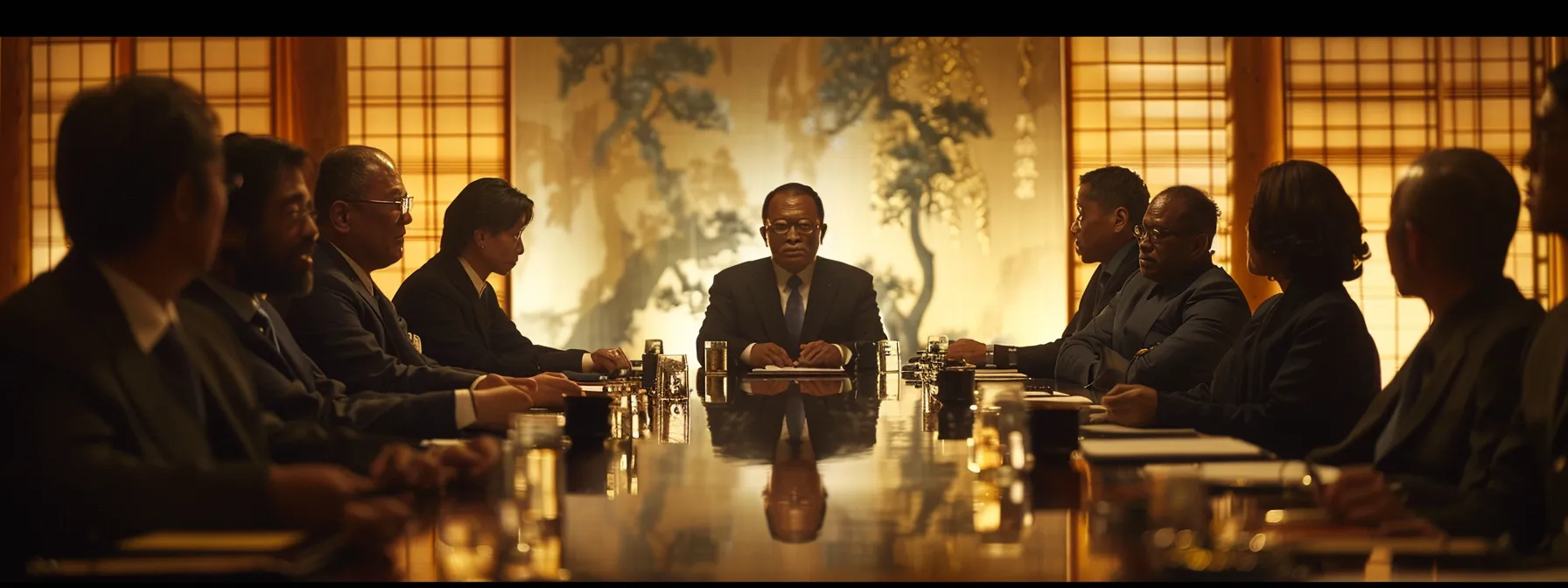Disclaimer: We sometimes use affiliate links in our content. For more information, visit our Disclaimer Page.
Can you effectively resolve disputes without escalating conflicts? Many believe that mediation is merely a form of bargaining, but it requires specific skills and training to achieve success. This article will explore the fundamentals of mediation, essential strategies for effective negotiations, and how to navigate challenges during the process.
By engaging with this content, you’ll gain insights that can transform your approach to mediation, helping you handle conflicts more effectively and improve communication with the other party. Whether you are a lawyer or someone involved in mediation, you will find strategies to enhance your skills and streamline the resolution process.
Key Takeaways
- mediation encourages dialogue and understanding, leading to less stressful conflict resolution
- effective mediators build trust and promote collaboration among parties to enhance relationships
- preparing for mediation involves understanding the conflict and setting clear goals for resolution
- ensuring confidentiality and voluntary participation fosters open communication and trust during mediation
- evaluating and monitoring agreements after mediation helps maintain accountability and strengthen outcomes
Understanding the Fundamentals of Mediation

Mediation as a form of alternative dispute resolution provides an effective way to tackle conflicts, including divorce disputes. Understanding the role of a mediator is crucial in managing these situations with integrity and knowledge. The key principles behind successful mediation can guide you through the process, ensuring a smoother resolution that meets everyone’s needs.
Defining Mediation in Dispute Resolution
Mediation is a voluntary process where a neutral third-party mediator helps conflicting parties reach an agreement without going to court. This method is particularly effective in lawsuits or disputes involving insurance claims, as it allows for a more collaborative approach to conflict management. By focusing on dialogue and understanding, mediation can alleviate the stress often associated with legal battles.
In the context of leadership, effective mediation strategies can enhance communication and foster a better working environment. Understanding how to utilize data and practical insights during mediation can help you address the unique needs of each party involved. This proactive approach not only resolves disputes but also builds trust and strengthens relationships for the future.
The Role of a Mediator in Conflict Management
The mediator plays a vital role in conflict management by fostering an environment where cooperation can flourish. As a neutral advocate, the mediator helps parties navigate their emotions and perspectives to find common ground. This process often involves listening actively, facilitating dialogue, and encouraging openness, which allows participants to express their needs and concerns freely.
In the context of collective bargaining and other disputes, a mediator can effectively bridge gaps between opposing views. By utilizing strategies that emphasize emotional understanding and collaboration, you can create a space where mutual respect guides interactions. This approach not only aids in resolving current conflicts but also sets the foundation for stronger relationships going forward.
Key Principles Behind Successful Mediation
Successful mediation relies on several key principles that ensure effective communication and negotiation. One important aspect is fostering a conversation that emphasizes the needs of all parties involved, allowing them to explore the best alternative to a negotiated agreement. By utilizing caucus techniques, the mediator can facilitate private discussions, enabling you to voice concerns without pressure, which can lead to more informed consent on solutions.
Another crucial principle is the mediator’s role as a neutral guide, much like a judge in the courtroom but without authority over the outcome. By creating a balanced environment, you can encourage open dialogue and help participants feel safe enough to express their needs. This process promotes understanding and collaboration, ultimately leading to resolutions that reflect the interests of everyone involved:
- Fostering open conversations
- Using caucus techniques for private dialogue
- Ensuring informed consent in agreements
- Maintaining neutrality throughout the process
- Building trust to encourage collaboration
Mediation is a delicate dance of words and emotions. Now, let’s focus on how to prepare for that dance, so you can step confidently into the room.
Preparing Effectively for the Mediation Process

To prepare effectively for the mediation process, you should start by identifying the conflict and the parties involved. Gathering necessary information and documentation will support your case and aid in negotiations. Setting clear goals and desired outcomes will guide the mediation toward a productive resolution. Lastly, choosing the appropriate mediation setting can greatly influence the atmosphere for compromise and advocacy during discussions.
Identifying the Conflict and Parties Involved
Identifying the conflict and the parties involved is the first step in preparing for a successful mediation session. You should take time to understand the underlying issues that caused the dispute, as these can often stem from cultural misunderstandings or differing legal interpretations. Gathering insights from attorneys or other relevant sources can boost your confidence in recognizing these factors and ultimately shape your mediation strategy.
Once you are aware of the dispute’s context, consider the perspectives and interests of each party involved. This approach encourages you to frame the dialogue in a way that respects their viewpoints, which is essential for fostering a constructive atmosphere. By acknowledging the unique culture and interests of each participant, you create a strong foundation for a collaborative resolution, enhancing the likelihood of achieving a mutually beneficial outcome.
Gathering Necessary Information and Documentation
Gathering necessary information and documentation is vital for a successful mediation process. You need to compile relevant facts, communications, and any agreements that pertain to the conflict. This preparation strengthens your position by clarifying your goals and enhancing your perception of the other party’s interests. For instance, understanding the ethics surrounding the issues at hand can guide your discussions and promote a respectful dialogue focused on restorative justice.
During mediation, effective brainstorming can help identify the underlying interests of all parties. When you present well-organized documentation, it allows for open conversation and promotes a collaborative atmosphere. This approach encourages understanding, as you highlight each party’s viewpoint and aim for a resolution that benefits everyone involved. By being thorough in your preparations, you bolster the chances of reaching a satisfactory agreement.
Setting Clear Goals and Outcomes for Mediation
Setting clear goals and outcomes for mediation is crucial for your success in the dispute resolution process. Start by identifying the specific needs of your organization and the individuals involved. Consider what you want to achieve, whether it’s a settlement, improved communication, or restoration of community relationships. Having well-defined objectives will guide your mediation methodology and ensure that discussions stay focused and productive.
Additionally, you should prepare to articulate these goals during the mediation sessions. Communicate openly the outcomes that matter most to you and encourage the other parties to do the same. This transparency can help to minimize misunderstandings and foster an atmosphere of cooperation, much like in an arbitration setting. The clearer your objectives, the easier it is for all participants to align their efforts:
- Identify your primary goals before mediation.
- Consider the needs of your organization and the parties involved.
- Communicate openly about desired outcomes.
- Use a structured methodology to keep discussions on track.
- Foster a cooperative atmosphere among all participants.
Choosing the Appropriate Mediation Setting
Choosing the appropriate mediation setting significantly impacts the effectiveness of conflict resolution. A neutral, comfortable environment fosters positive behavior from all participants, promoting open dialogue and collaboration. Whether you’re working in-person or using technology for virtual mediation, ensure the space is conducive to focused discussions, free from distractions and interruptions.
Additionally, having a well-defined policy for the mediation process enhances the experience for everyone involved. Consider setting ground rules that align with the goals of the mediation. This structure helps maintain respect and encourages participants to engage fully, leading to a smoother resolution. Keep these steps in mind for an effective mediation process:
- Establish a neutral and comfortable environment.
- Utilize technology effectively for remote mediation.
- Define clear policies and ground rules for behavior.
- Encourage open dialogue and respect among participants.
- Focus on productive conflict resolution strategies.
You have laid the groundwork for a successful mediation. Now, it’s time to uncover the essential strategies that will help you navigate the process with confidence.
Essential Strategies for Effective Mediation

To master effective mediation strategies, you must focus on five key approaches. Start by employing active listening techniques to truly understand each party’s perspective. Facilitate open and honest communication, promoting mutual understanding. Encourage creativity in developing solutions to conflicts, while highlighting the importance of collaboration and compromise. These strategies are essential for achieving successful dispute resolution, whether in small claims court or through conciliation methods.
Employing Active Listening Techniques
Employing active listening techniques is essential for effective mediation. By truly focusing on each party’s words, you’ll build rapport, making them feel heard and validated. This is particularly important in disputes involving contracts, where misunderstandings can lead to significant tension between the plaintiff and defendant. Listening carefully allows you to evaluate the underlying issues at play, paving the way for a more amicable resolution.
As a mediator, demonstrating active listening involves not just hearing the words spoken, but also observing non-verbal cues and emotions. This approach fosters a sense of justice for all parties involved, as they feel respected and understood. When you take the time to engage meaningfully, you create an environment conducive to open dialogue, ultimately guiding everyone towards a fair and satisfactory agreement.
Facilitating Open and Honest Communication
Facilitating open and honest communication is vital for effective dispute resolution. This approach allows parties to express their opinions freely, fostering a climate of trust and understanding. During a joint session, it’s important to create an atmosphere where each individual feels motivated to share their thoughts without fear of judgment. By encouraging openness, you can often uncover underlying issues that contribute to the conflict, setting the stage for a more productive dialogue.
Your role as a mediator involves guiding the conversation to ensure everyone has a chance to speak and be heard. By actively prompting participants to articulate their views and feelings, you help clarify misunderstandings. This exchange of ideas can reveal common goals and encourage collaboration, ultimately leading to a resolution that satisfies all parties involved. Effective communication is not just about speaking; it’s also about listening and validating each person’s point of view, creating a path towards resolution.
Promoting Mutual Understanding Between Parties
Promoting mutual understanding between parties is essential for successful mediation. By presenting a clear hypothesis about each side’s interests, you can guide discussions that lay a foundation for cooperation. For example, when representing an employee’s concerns, it is beneficial to share information openly with the employer to better address any misunderstandings and find common ground.
In addition, seeking legal advice can help clarify any complex issues that may arise during mediation, enhancing understanding on all sides. When both parties feel heard and valued, it fosters an environment where constructive dialogue can flourish. This approach not only resolves disputes but also strengthens relationships, making future communication more effective.
Developing Creative Solutions to Conflicts
Developing creative solutions to conflicts requires a blend of empathy and effective problem-solving strategies. You should foster an environment where all parties feel comfortable sharing their views, which allows for the exploration of innovative ideas. For instance, research shows that including diverse perspectives, such as those shaped by gender, can lead to more effective solutions that address the unique needs of everyone involved.
When faced with challenging disputes, consider employing collaborative brainstorming techniques. Encourage participants to contribute potential solutions without judgment, as this will promote open dialogue and creativity. This approach not only aids in reaching a satisfactory resolution but also empowers individuals to express their concerns. Remember, each resolution should be tailored to the specific situation while ensuring that everyone’s interests are respected:
Encouraging Collaboration and Compromise
Encouraging collaboration and compromise is vital for achieving peace during mediation, especially when disputes involve damages to property. When you foster an environment of diplomacy, participants feel more inclined to engage in productive dialogue. This atmosphere not only reduces tension but also paves the way for creative solutions that address everyone’s needs, ultimately leading to a mutually beneficial resolution.
As a mediator, you can facilitate this process by guiding each party to explore their interests and common goals. By encouraging participants to share their viewpoints and actively listen to each other, you help them understand the underlying concerns related to their disputes. This collaborative approach not only builds trust but also transforms conflict into an opportunity for shared understanding, creating pathways to compromise that resolve issues effectively.
You’ve learned the key strategies that pave the way for success. Now, let’s explore the obstacles that can arise and how to handle them with skill.

Managing high emotions and tension is essential in mediation, as conflicts can bring out strong feelings. You will learn how to utilize active listening techniques to facilitate better communication, overcome barriers, and maintain confidentiality. Addressing power imbalances and dealing with impasses will also be covered, ensuring you are prepared to handle interpersonal conflict effectively and protect your reputation in resolving disputes without resorting to court.
Managing High Emotions and Tension
Managing high emotions and tension during mediation is vital for achieving successful outcomes. When parties engage in conflict, emotions can escalate quickly, which may hinder productive communication. To mitigate this, you can establish ground rules that promote respect and civility. It’s important to acknowledge emotions without letting them dominate the conversation, reminding everyone of the shared goal of finding a resolution.
To further ease tension, consider employing active listening techniques. This means that you should focus on what each person is saying, paraphrase their points, and validate their feelings. By making participants feel heard and understood, you can create a more open and calm atmosphere. Acknowledging emotions and fostering respectful dialogue not only helps diffuse conflict but also directs attention back to the core issues needing resolution.
Overcoming Communication Barriers
Overcoming communication barriers is crucial in mediation, as misunderstandings can escalate conflicts. You might encounter situations where parties misinterpret one another’s intentions or words. To address this, encourage participants to clarify their statements and ask questions. This practice can help minimize confusion and foster an environment of open dialogue.
Another effective strategy involves utilizing neutral language to prevent sensitive topics from triggering defensive reactions. You can rephrase contentious statements in a more cooperative tone, making it easier for all parties to engage without hostility. Implementing these techniques enhances communication, paving the way for a productive resolution:
- Encourage clarification of statements.
- Prompt questions to reduce misunderstandings.
- Use neutral language to defuse tensions.
- Foster a cooperative dialogue among parties.
- Establish a safe space for open communication.
Addressing Power Imbalances Between Parties
Addressing power imbalances during mediation is crucial for ensuring that all parties feel respected and heard. As a mediator, it’s important to recognize when one party may have more influence due to factors like experience or resources. By creating an environment where everyone has an equal opportunity to voice their concerns, you can help level the playing field, fostering an atmosphere where negotiation can be effective and collaborative.
To effectively manage power imbalances, you might consider using techniques such as individual sessions or caucuses. These settings allow the less dominant party to express their true feelings and perspectives without fear of interruption or dismissal. By validating their experiences and ensuring they feel supported, you empower all participants in the mediation process, ultimately leading to a fairer resolution that addresses the needs of everyone involved.
Dealing With Impasses and Stalemates
Dealing with impasses and stalemates during mediation can be challenging, but there are effective strategies to break the deadlock. When you find yourself in a situation where discussions have halted, consider facilitating a session where each party can restate their key interests and concerns. This method encourages open communication and may help uncover underlying issues that need to be addressed, allowing you to steer the conversation back on track toward resolution.
Another useful approach is to introduce an independent perspective, which can shift focus and inspire new ideas. You might invite each party to propose alternative solutions or compromises, reminding them of the shared goal of finding a resolution. By fostering a collaborative environment and encouraging creativity, you can navigate through the complexities of impasses, ultimately paving the way for a mutually agreeable outcome.
Mediation presents its own set of challenges, but it also demands careful attention to the rules that guide it. Understanding the legal and ethical side will sharpen your approach and protect your interests as you move forward.
Legal and Ethical Considerations in Mediation

Legal and ethical considerations are crucial in mediation, focusing on four key areas. First, you must understand confidentiality requirements to protect sensitive information shared during the process. Next, ensuring voluntary participation is essential for authentic engagement from all parties. Balancing neutrality and fairness helps maintain trust, while complying with legal standards and regulations safeguards the mediation’s integrity. These aspects are integral to mastering effective mediation strategies for successful dispute resolution.
Understanding Confidentiality Requirements
Understanding confidentiality requirements in mediation is fundamental for creating a secure environment where parties feel safe to share their concerns openly. As a mediator, your priority is to protect the sensitive information disclosed during sessions, which fosters trust among participants. By assuring parties that their discussions remain confidential, you enable more honest communication, ultimately leading to more effective dispute resolution.
It’s essential to inform all parties about the extent and limits of confidentiality in the mediation process. You should clarify that while the mediation discussions are private, certain exceptions may apply, such as disclosures of threats or intentions to commit harm. By setting these boundaries at the outset, you help manage expectations and enhance the overall effectiveness of the mediation strategy, ensuring that everyone knows their contributions are respected and protected.
Ensuring Voluntary Participation
Ensuring voluntary participation in mediation is critical for fostering a productive environment where all parties feel empowered to engage fully. You should make it clear to participants that their involvement is not only welcomed but also necessary for a successful resolution. This creates a sense of ownership over the process, encouraging each individual to voice their needs and concerns without feeling coerced or pressured.
Additionally, highlighting the benefits of voluntary participation can motivate parties to commit to the process. Explain that when everyone agrees to participate willingly, it enhances communication and collaboration, leading to more satisfactory outcomes. By emphasizing the importance of voluntary engagement, you help build a foundation of trust that can significantly improve the chances of reaching an amicable agreement in mediation.
Balancing Neutrality and Fairness
Balancing neutrality and fairness in mediation is essential for fostering an environment where all parties feel respected and valued. You, as a mediator, must remain impartial while actively promoting fairness among participants. This can be achieved by creating equal opportunities for each side to express their concerns and perspectives, ensuring that no party feels overshadowed or dismissed during discussions.
To cultivate trust and open communication, it’s crucial to communicate your neutral role clearly. You might address any perceived biases by regularly checking in with each participant to gauge their comfort and satisfaction throughout the mediation process. This practice not only reinforces your commitment to neutrality but also encourages a collaborative atmosphere, allowing for more effective dispute resolution that meets the needs of all parties involved.
Complying With Legal Standards and Regulations
Complying with legal standards and regulations is fundamental for effective mediation. As a mediator, you must ensure that the process aligns with relevant laws, which varies by jurisdiction. Understanding these legal requirements helps you structure the mediation in a way that protects each party’s rights, fostering a fair environment conducive to resolution.
For instance, mediators should be aware of any rules governing confidentiality and the admissibility of evidence in court. This knowledge not only enhances the trust between parties but also ensures that discussions remain productive. By adhering to legal standards, you demonstrate professionalism and integrity, building a reputation that can lead to more successful mediation sessions:
Understanding the legal and ethical frameworks sets the stage for true resolution. Now, it’s time to turn those insights into action by implementing and following up on the agreements made.
Implementing and Following Up on Mediation Agreements

Implementing and Following Up on Mediation Agreements
To ensure successful dispute resolution, it’s essential to focus on key aspects of implementing and following up on mediation agreements. You’ll start by drafting clear and enforceable agreements that reflect each party’s understanding. Next, reviewing terms with all parties ensures everyone is on the same page. Monitoring compliance is crucial, as is addressing any non-compliance directly. Finally, evaluating the mediation process helps identify opportunities for improvement in future sessions.
Drafting Clear and Enforceable Agreements
Drafting clear and enforceable agreements is vital for ensuring that all parties understand their responsibilities after mediation. Accurate language and specific terms can help eliminate ambiguities that may arise later. For instance, stating exact timelines for actions and detailing any financial obligations can prevent future disputes and promote compliance.
Moreover, it is important to involve all parties in the drafting process to ensure that the agreement reflects their interests and commitments. By seeking consensus on the language used in the agreement, you can foster a sense of ownership that encourages adherence to the terms. Ensure that everyone has a copy of the finalized document to maintain transparency and accountability after the mediation session concludes:
- Use clear and specific language in the agreement.
- Involve all parties in the drafting process.
- Clarify timelines and obligations to prevent misunderstandings.
- Provide copies of the agreement to all involved.
- Review the terms collectively to ensure mutual understanding.
Reviewing Terms With All Parties Involved
Reviewing the terms of the mediation agreement with all parties is crucial to ensure clarity and mutual understanding. Begin by discussing each section of the agreement in detail, allowing everyone to express any concerns or questions they may have. This step helps to reinforce the commitment to the terms and encourages a sense of ownership, which is vital for compliance.
Additionally, taking the time to collectively review the agreement helps prevent future misunderstandings. This practice not only addresses potential issues upfront but also encourages accountability among the parties involved. By ensuring that everyone is on the same page, you enhance the likelihood of successful implementation and cooperation moving forward:
Monitoring Compliance and Addressing Non-Compliance
Monitoring compliance with mediation agreements is essential for ensuring that all parties uphold their commitments and foster a collaborative environment. You should establish a clear process for tracking progress on the implemented terms, such as regular check-ins or follow-up meetings. This not only keeps everyone accountable but also allows you to address any emerging issues immediately, reinforcing the value of the agreement in maintaining positive relations.
Addressing non-compliance necessitates a proactive approach. If one party fails to adhere to the agreed-upon terms, you can facilitate a discussion aimed at understanding the reasons behind the lapse. By addressing concerns openly and seeking solutions, you can guide the parties back to the original intent of the mediation agreement, helping to restore trust and ensure a successful resolution moving forward.
Evaluating the Mediation Process for Future Improvement
Evaluating the mediation process is vital for enhancing future dispute resolution strategies. After each session, you should reflect on what worked and what didn’t, gathering feedback from all participants. This assessment not only helps you identify areas for improvement but also strengthens your skills as a mediator, making subsequent mediations more effective and efficient.
Consider adopting a structured approach to gather insights about the mediation experience. You can ask questions regarding communication effectiveness, the clarity of agreements, and overall satisfaction with the mediation process. By using these evaluations, you can refine your techniques and ensure that your mediation approach continues to meet the evolving needs of participants in future cases.
Conclusion
Mastering effective mediation strategies is essential for resolving disputes successfully and fostering collaborative relationships. By employing active listening, promoting open communication, and addressing power imbalances, you create an environment conducive to dialogue and understanding. Clarity in agreements and a structured approach to follow-up further enhance the chances of compliance and satisfaction among all parties. Ultimately, these skills not only resolve conflicts but also lay the groundwork for stronger connections and future cooperation.





